The fungus on the toes is a problem that worries a lot.Itching, burning and ugly type of skin and nails is only a small part of it.The disease is dangerous with complications that are even more difficult to cure.However, it is possible to cope with the problem if you seriously treat the treatment of fungal infection (mycosis).
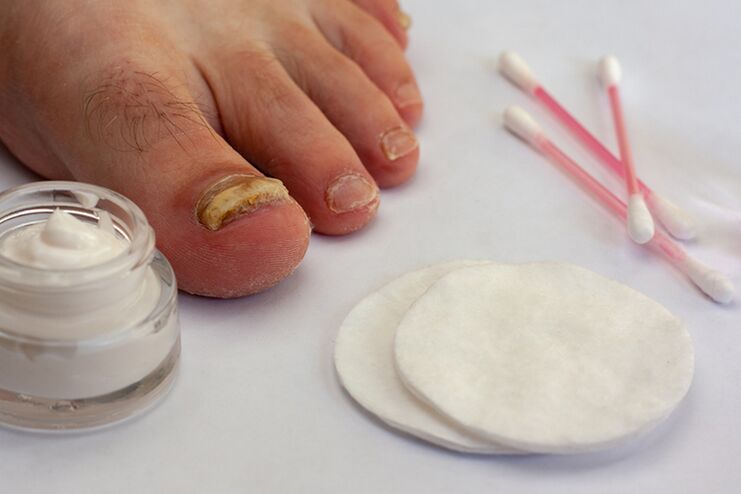
Why does the fungus occur?
Fungi are one of the types of infectious agents affecting the skin.These are difficult and extremely patient microorganisms.Therefore, fungal diseases require a serious and integrated approach to treatment.
The fungus has their favorite habitats on the skin.First of all, it is the skin of the fingers and nails.The reason for this is understandable - the feet are usually inside the shoe, within which a lot of moisture and dirt accumulate, as well as very hot.Therefore, fungi living on the feet have a lot of food and a microclimate favorable to spread.Some types of complex fungi often affect the skin, and other types of fungi, for example, yeast and mold, prefer nail plates.Probably simultaneous infection with several types of fungi immediately.
Contribute to the development of fungi on your fingers:
- reduced local and general immunity;
- poor leg hygiene;
- Inappropriate and tight shoes;
- irregular change of socks or socks;
- coating socks or a hose of synthetic materials that do not pass air;
- regular hypothermia or overheating of the feet;
- leg disorders in the legs;
- varicose veins;
- Chronic diseases of the cardiovascular system, diabetes mellitus;
- a long course of treatment with antibiotics;
- increased sweating of the feet;
- lack of vitamins and mineral elements in the body;
- mechanical damage to the skin, corn, foot trauma;
- Excessive physical weight in the legs;
- An irregular haircut of nails in the legs.
The most important of these factors have reduced immunity and blood circulation in the legs.A decrease in immunity can occur for various reasons.Usually these are serious chronic diseases, mainly infectious ones.Also, immunity can be lowered due to HIV, immunosuppressants, with cancer.A violation of blood circulation in the toes is no less important for diseases of blood vessels, blood, diabetes, smoking.
Stop mycoses can develop in men and women.In adults, they appear more often than in children.
Some types of fungi are constantly inhabited on the skin and activated only in adverse circumstances, for example, Candida genus fungi.And other species are transmitted from person to person.Infection can occur when visiting the gym, bath, shower, if at the same time a person does not use personal shoes.Also, people who put someone else's shoes or socks, or allow other people to use them, undergo a considerable risk of infection.Often, the infection occurs when using the same towels, manicure supplies, etc.Factors that increase the chance of infection are cuts on the surface of the skin, deformation of nail plates.
Symptoms of finger mycosis
The main symptoms of foot mycosis are itching and burning.Redness of the skin, small bubbles, adult peeling and skin tightening, an unpleasant odor can also be observed.The first symptoms of skin mycosis can be confused with simple irritation, gratitude.
Symptoms of onycomycosis
Fungi can affect not only the skin but also nails.The last variety of mycosis is called onycomycosis.The main symptom of onychomycosis is a change in the structure and type of nail, its growth.The nail turns yellow, furrows and cracks appear on its surface, the nail plate thickens and deforms.If you do not treat treatment, the nail will gradually be exterminated from the nail bed and collapses.
What does the mushrooms look like on your finger: Photo
You don't have to make a diagnosis on your own, with pictures.The diagnosis should be made by a qualified dermatologist.
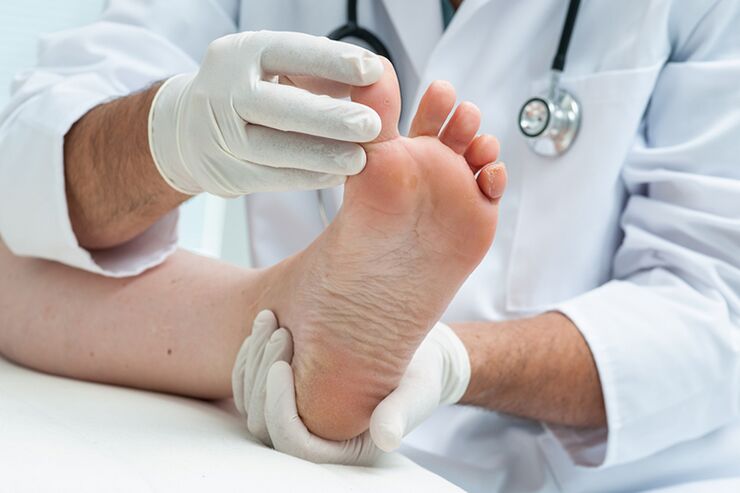
Only he can determine the type of fungus.To do this, it may need not only an external examination of the legs but also laboratory tests of skin pieces.
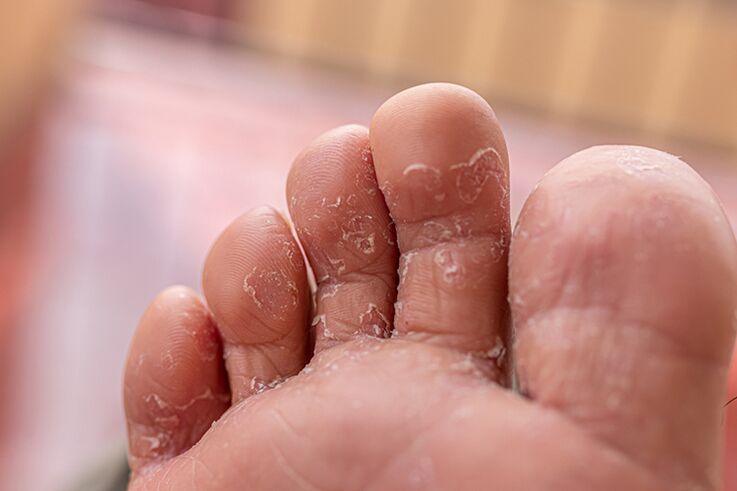
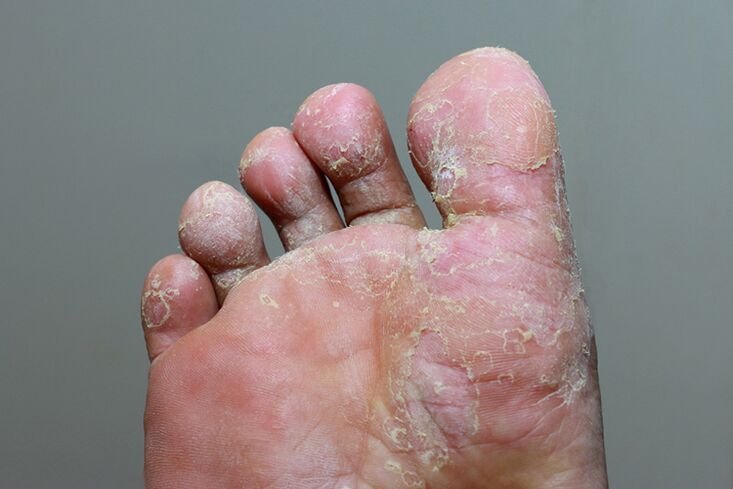
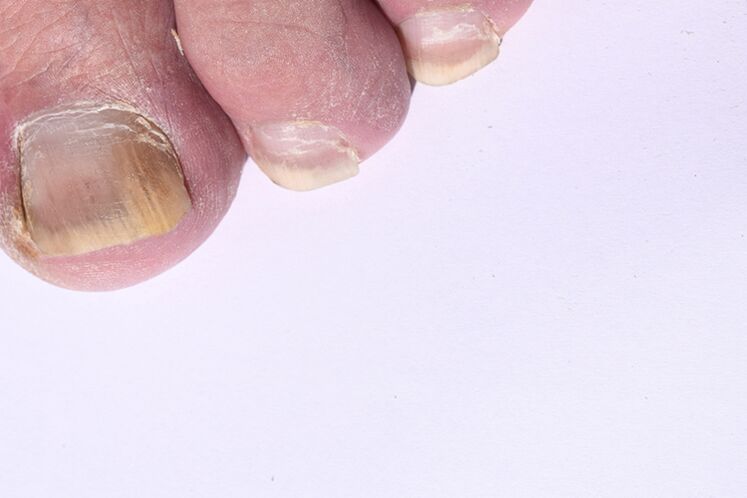
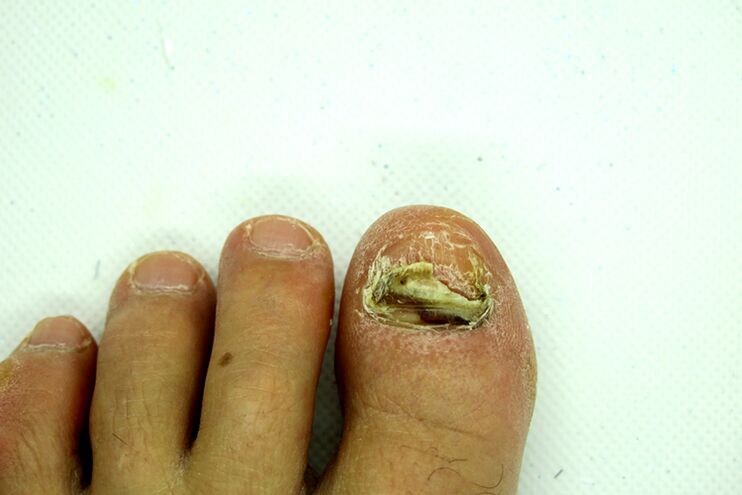
However, the presence of signs, at least from the distance resembling the pictures described in the photograph, is a case for concern and see a doctor.
The treatment of the disease is comprehensive and performed at home under the supervision of a doctor.
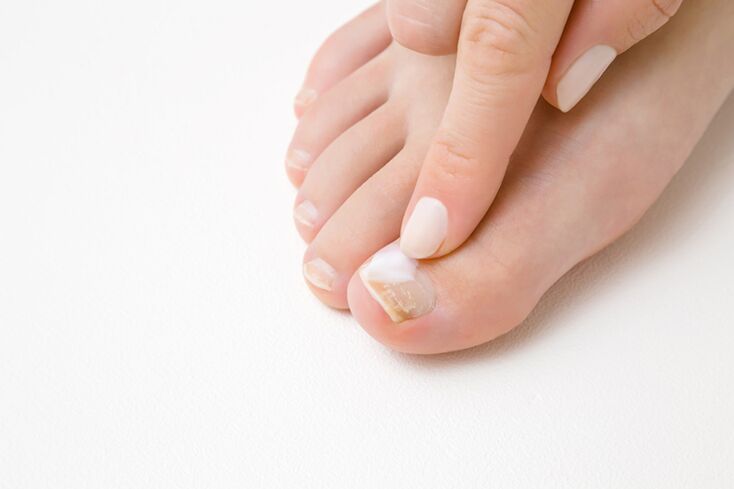
The mushrooms on the little finger
The fungus can affect the skin of every toe.But the small toes on the legs are more vulnerable to the infection.The little finger in tight shoes is often compressed, due to which sculles occur in the skin and blood circulation.With damage to the finger of the little finger, the disease develops very quickly, faster than in any other nail.When infected with a little finger, the infection can very quickly affect the other fingers.
The fungi on the little finger are treated in the same way as the fungus in other areas of the skin.With the onycomycosis of the little finger, the most rational production may be removing its nail plate.This surgery will not cause much annoyance to the patient because the nail on the little finger grows rapidly.However, while the nail does not grow again (this can last 3-4 months), it is necessary to use antifungal medicines to prevent re-infection.
How to treat fungi on our fingers?
Treatment of mycosis should begin in the first alarming symptoms.First of all, you should contact a dermatologist for diagnosis.Before starting therapy, it is necessary to determine the fact of the presence of mycosis and the type of pathogenic microorganisms.For this purpose, the doctor will take a piece from the skin or cut a piece of nail (with nail damage).Blood tests, blood for sugar are donated.The mycosis of the foot of the feet should be differentiated by:
- other infectious skin diseases;
- allergic reactions;
- Dermatosis caused by diabetes, vascular disease, stress and nervous diseases.
For the treatment of mycosis in the legs, local products (spray, ointments, creams) are used more often.Only in severe cases can the doctor prescribe antimicotic tablets.Most commonly used tablets with fluconazole, itraconazole, terbinafine.
Treatment is based on the use of antimicotic agents.This type of medicine contains substances that kill fungi or stop their reproduction (fungi).
Which antimycotic agents are most often used:
- Clotrimazole,
- Ketoconazole,
- Terbinafine,
- Nistatin,
- Mikonazole,
- Environment,
- Fluconazole.
Local medicines with antibacterial, anti -inflammatory and keratolytic properties are also used.Antibacterial agents are prescribed if the soup occurs, that is, the bacteria attach to a fungus infection.Anti -inflammatory drugs face well with unpleasant symptoms - itching and burning.However, they do not affect the cause of the disease - pathogenic microorganisms.Keratolytic agents include zinc, sulfur and sulfur oil.They accelerate the regeneration of skin tissue due to the acceleration of the exfoliation of the dead epidermis.
For stop mycosis therapy, baths with antiseptic agents are also used - potassium permanganate solutions, iodine, salt, dietary, boric acid are used.Baths are best done before bedtime for 20 minutes.To prevent infection with spores, you need to treat healthy skin areas with chlorhexidine, iodine, hydrogen peroxide, potassium permanganate.For knife therapy, varnish with antimicotic substances - Loocentry, exoderil, batropen are used.These lias should be applied to the nail plate.
Ointments and creams should be applied to the first -cleaning and clean skin with the frequency shown in the instructions for the product.The oil application area should be slightly larger than the area of visible damage.To apply the nail to the nail plate, the nail should evaporate, the uneven edges must be sand with a file, and the nail surface must be degenerated with a solution containing alcohol.
In folk medicine, decoctions of medicinal herbs are used to get rid of mycosis in the foot - chamomile, calendula, sage, juices, mint, vinegar, onions and lemon.
What should you do if the mushrooms do not cross your finger?
Treating mycosis is a long and difficult process.Mushroom microorganisms are very patient, and within two days it is impossible to get rid of them.Sometimes many months of careful therapy are needed.At the same time, it is impossible to interrupt therapy for a single day.Treatment of onycomycosis cannot be completed until a new, healthy nail plate grows.
It is also important to consider other factors related to the development of the disease.Failure to comply with skin hygiene and the optimal foot temperature regime can reduce all therapeutic efforts to zero.This means that it is necessary to wash the skin surface regularly, avoid overheating or hypothermia.It is also important to avoid mechanical damage to the skin, excessive foot load, incisions and damage.Excess weight increases the pressure in the leg, so if you suffer fullness, you should think about losing weight.
If the patient constantly wears infected shoes with a fungus, then no powerful medicine will help here because the site of dead microorganisms will immediately invade new.Therefore, it is necessary to get rid of all the factors that contribute to the re -infection.You can't go to someone else's shoes, socks.Ockssets should be thoroughly washed and changed regularly.The inner surface of the shoe should be fully sprinkled with anti -imposed agents.
With stubborn mycosis, it is necessary to analyze the general state of health.Perhaps this will help to identify the causes of damaged immunity and blood circulation.Therefore, it is possible to go through a thorough examination and exclude problems with the heart, blood, vessels, organs of the endocrine system.
Finally, it is possible that microorganisms simply developed resistance to the antimicotic agent used.Then it will be necessary to change the medicine.Perhaps, systemic antimicotic drugs in tablets will be needed.The dose of the medication should be selected by a dermatologist.
























